#i know we all collectively losing our minds from this cosmopolitan issue
Explore tagged Tumblr posts
Text
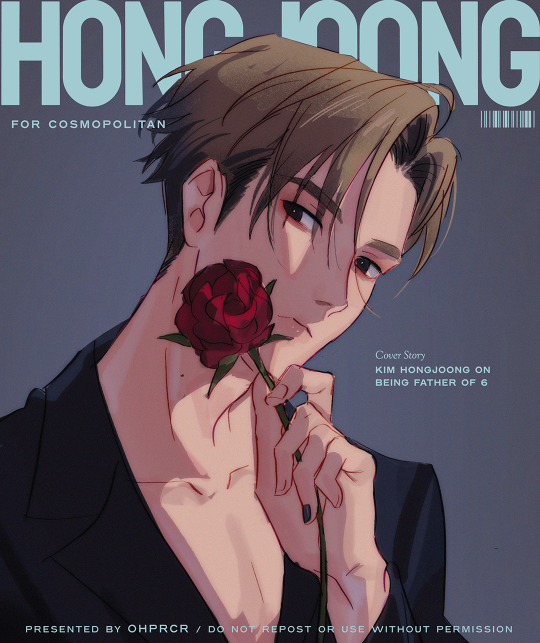
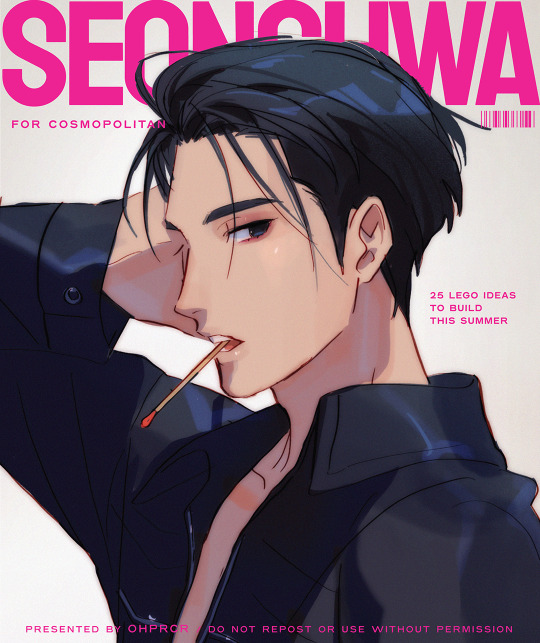
seongjoong for cosmopolitan august 2023
#ateez#ateez fanart#kim hongjoong#park seonghwa#i know we all collectively losing our minds from this cosmopolitan issue#mine
670 notes
·
View notes
Text
Right or Left?
There is a popular notion in political circles right now that the distinction between left-wing and right-wing politics may no longer be useful. However, I would argue that it’s the only way to make sense of some of the more ridiculous elements of our modern political landscape.
Perhaps due to the influence of social media, public discourse is increasingly riddled with people from both left- and right-wing political traditions who fail to correctly identify the provenance of their own opinions and miscategorise the opinions of others (sometimes for the purposes of mounting straw man arguments).
For instance, it’s not uncommon in online political discussions to see the bizarre assertion that Hitler was a socialist, seemingly on the basis that the word “sozialistische” was in the name of his party (NSDAP). In reality, the Nazis leaned so hard to the right, they fell over.
Another common implication is that fascism and communism are more or less the same kind of thing. In reality, fascism is extreme right-wing, weaponised capitalism and Stalinism is extreme left-wing, weaponised communism. While they certainly had some superficial elements in common, they are fundamentally divergent political philosophies.
Because a dry recitation of dictionary definitions is boring, I’ve kept that sort of thing to a minimum in the first part, below. The second part, even further below, to which you are free to scroll now, is a more practical series of dichotomies framed as a Cosmopolitan-style quiz. Wheel it out at parties! Have fun with your friends.
I: DEFINITIONS
Keeping in mind that words don’t have meanings, and although narrow definitions are elusive, there are certain common characteristics we can identify to broadly describe an idea or political approach as left-wing or right-wing. Believing that they are like each other, or they’re just different versions of the same thing, or that it doesn’t really matter either way, is historically illiterate.
Right-wing
Right-wing politics is essentially conservative, where social and economic hierarchies are regarded as integral elements of opportunity, social mobility and progress. It’s a natural fit with free-market capitalism, which combines with right-wing politics to create a system where, ostensibly, the smarter members of society who work harder will be the most rewarded, and open competition optimises all markets.
Right-wing people tend to be in favour of lower taxes and fewer public services, which would be traded on the open market like everything else, without government interference. The ultimate expression of right-wing politics is fascism, the ideal of which is to have no taxes at all and empower corporations using any means necessary.
Historically, right-wing politics has included, more or less in order of right-winginess: libertarians; conservatives; religious factions; (most) extreme nationalists; racists and fascists.
Left-wing
Left-wing politics is essentially liberal, with strong support for equality and egalitarianism and a rejection of the differences in status, power, and wealth which actively impede social mobility, opportunity and progress.
Left-wing people tend to be in favour of higher taxes and more public services, which would be provided by the government. The ultimate expression of left-wing politics is communism, the ideal of which is to abolish private property, nationalise all industries, and provide all public utilities and services for free.
Historically, left-wing politics has included, more or less in order of left-winginess: liberals; progressives; socialists; communists and anarchists.
II: THE QUIZ
As the nature of a dichotomy involves losing nuance, the following is not designed to be absolutely accurate. It’s designed to help you understand the difference between left-wing and right-wing, and how this relates to your personal politics. If you want to reblog or reply just to “correct” one of these, please don’t bother. These may not work individually.
If you think intellectuals are ivory-tower academics who add nothing of value to society, you’re probably right-wing.
If you think intellectuals are experts in their chosen fields and have much to offer our society, you’re probably left-wing.
If you think everyone else should have the same values and priorities that you do, you’re probably right-wing.
If you think that you can learn and grow from people with values and priorities different from yours, you’re probably left-wing.
If you think Israel is a plucky democracy surrounded by enemies and has the right to defend itself any way it sees fit, you’re probably right-wing.
If you think Israel is conducting a brutal oppression of the Palestinian people, you’re probably left-wing.
If you think the economy and maintaining order are more important than public health and education, you’re probably right wing.
If you think public health and education are more important than the economy and maintaining order, you’re probably left-wing.
If you think stand-up comedians in general are unfunny, snarky, and gratuitously offensive, you’re probably right-wing.
If you think stand-up comedians in general are funny, you’re probably left-wing.
If you think of the history of your country as a glorious time of heroes and patriots who people don’t appreciate enough, you’re probably right-wing.
If you think of the history of your country as an often-shameful time of oppression and exclusion for large sections of the population, you’re probably left-wing.
If you want to live in a low-tax society friendly to the rich and heavy on individual rights, you’re probably right-wing.
If you want to live in a high-tax society friendly to the poor and heavy on communal rights, you’re probably left-wing.
If your first reaction to the idea of “progress” is fear or loathing, you’re probably right-wing.
If your first reaction to the idea of “progress” is hope or relief, you’re probably left-wing.
If you believe we should lean heavily on tradition for our immutable values, you’re probably right-wing.
If you believe our evolving values should reflect our changing needs, you’re probably left-wing.
If you believe that society oppresses people by pushing gender non-conformity on everyone, you’re probably right-wing.
If you believe that society oppresses people by pushing rigid gender roles on everyone, you’re probably left-wing.
If you believe that government agencies and institutions should take account of mainstream religious beliefs, you’re probably right-wing.
If you believe in the separation of church and state, you’re probably left-wing.
If you believe that interest rates should be high (to encourage saving), you’re probably right-wing.
If you believe that interest rates should be low (to encourage borrowing), you’re probably left-wing.
If you believe that abortion should be banned and all unwanted pregnancies should be carried to term by law, you’re probably right-wing.
If you believe that all unwanted pregnancies should be the jurisdiction of the woman by law and they should have access to safe and legal abortions, you’re probably left-wing.
If you believe that brutal dictatorships in foreign countries should be opposed only if they are unfriendly to our interests, you’re probably right-wing.
If you believe that brutal dictatorships should be opposed without question, you’re probably left-wing.
If you believe that Islam is a current serious threat we need to address, you’re probably right-wing.
If you believe that Islam is a religion much the same as many others, you’re probably left-wing.
If you believe that everyone starts out with the same opportunities, and their success is a function of how hard they work, you’re probably right-wing.
If you believe that everyone starts out in a predetermined position in a social hierarchy, and their success is a function of this hierarchy, you’re probably left-wing.
If you believe that unions act as an impediment to a corporation’s ability to generate wealth, you’re probably right-wing.
If you believe that unions empower workers to secure better rights and conditions for themselves through collective bargaining, you’re probably left-wing.
If you assemble your opinion on important issues based on the views of friends, family, tradition and sources you personally trust, you’re probably right-wing.
If you assemble your opinion on important issues based on expert analysis and statistical data, you’re probably left-wing.
Now you know.
19 notes
·
View notes
Text
20 Best Female Fitness Models Of 2020

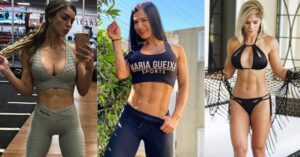
There are actually so many superb feminine fitness fashions on the market that we couldn’t probably embody everybody on our record. However, we did discover among the many hottest and influential ladies at the moment (however don’t be mad in case your favourite wasn’t included). These hotties are completely doing their factor and all have fairly huge followings on Instagram/social media. So, right here’s our record of common feminine fitness fashions (take pleasure in)! 1. Kayla Itsines First up is Australian private coach Kayla Itsines. This 28-year-old can also be an writer and entrepreneur who based a collection of fitness ebooks known as Bikini Body Guides (BBG). She additionally created the app, Sweat with Kayla, which was probably the most profitable fitness app of 2016. Itsines is vastly common on social media, boasting a powerful 12.5 million followers on Instagram. She was additionally named 30 most influential individuals on the Internet by Time’s, and identifies herself as Greek on account of her household heritage. Itsines can also be definitely among the many wealthiest fitness figures with over $60 million. 2. Sommer Ray An completely gorgeous fitness mannequin from the U.S., this 23-year-old has discovered unparalleled success with 24.9 million Instagram followers to show it. This tops our record for Instagram followers. She additionally owns a clothes model (Sommer Ray Collection) and is getting extra common by the day. 3. Michelle Lewin If we’re speaking about feminine fitness fashions then Michelle Lewin positively belongs within the dialog. This beautiful influencer positively is aware of what she’s doing relating to constructing a head-turning physique. Lewin began off working at a Venezuela clinic and doubtless by no means would have thought she’d blow up how she did. Now she’s one of the recognizable faces who has been on the duvet of a number of high-profile fitness magazines together with Sports & Fitness, Her Muscle & Fitness, and Iron Man. She’s at the moment based mostly in South Florida. Oh… and also you would possibly keep in mind the time she was bitten within the butt by a pig on the seashore throughout a photoshoot. 4. Jen Selter Top feminine fitness mannequin and web superstar Jen Selter is simply 26 years outdated however she has made fairly the title for herself. Her ardour for fitness began in highschool when she labored on the entrance desk of a fitness center. She discovered figuring out to be a technique to relieve stress and earlier than she knew it, she would pave the best way for different social media influencers. Selter apparently performed a component in popularizing the “belfie” or butt selfie and her signature “Seltering” poses. She has additionally been featured in a number of publications comparable to Women’s Health, Vanity Fair, Cosmopolitan, The New York Post, and Elite Daily. Other notable accomplishments embody being acknowledged as a prime fitness influencer by Forbes in 2017. She’s additionally the co-owner for BlendJet (moveable blenders) and founding father of @couplegoals. 5. Paige Hathaway Definitely one of many extra common feminine fitness fashions, Paige Hathaway started her journey in 2011. Hathaway is from Minnesota initially and has achieved such enormous success through the years. Although, her childhood was tough coping with the divorce of her mother and father and custody points. But she went on to do fairly nicely for herself, competing in Bikini, showing in magazines, and raking in 7 figures a year, making her one of many highest-paid fitness fashions. 6. Ana Cheri Besides having a really profitable modeling profession, Ana Cheri can also be a fitness center proprietor, actress, and host with a following of 12.5 million on Instagram. Cheri was additionally a options Playmate mannequin in 2015, citing the next about gym-spiration… “You have to start somewhere. If the gym seems intimidating, try an outdoor sport. Every little bit counts.” 7. Anllela Sagra Anllela Sagra has a killer physique that she isn’t shy about displaying off. Her determine has acquired lots of consideration from prime names within the trade and earlier than she turned actually common, she was a vogue design pupil who would mannequin (vogue) just a few instances per week. But she turned very severe about fitness and needed to compete, of which she positioned third at her first competitors. Sagra’s transfer to the US from Columbia was apparently one of the best transfer the 26-year-old made as a result of it paid off huge time! Here’s an inspiring quote from the bio on her web site… “In life there is no such thing as luck, there are only opportunities and it is your decision whether or not to take a chance on them. I decided to take it and risk everything, lose everything and just jump into the world of possibilities and the truth is that it was the best decision I ever made in my life.” 8. Eva Andressa It’s fairly apparent Eva Andressa works her butt off to rock that sort of physique and he or she positively deserves the popularity. Of course, she used to compete professionally which is smart. Her most notable accomplishments embody… 2008 Brasil, Bodyfitness, 1st 2009 Brazilian National champion, Bodyfitness The 35-year-old Brazilian mannequin has 5.6 million Instagram followers and actually noticed success after showing on the superstar TV present in Brasil – Programa do Jo. Andressa went on to have her personal present in 2015 known as Dica Fitness of which she interviews well-known athletes. 9. Katya Elise Henry Based in Miami, Florida, Katya Elise Henry has actually bought it happening. She’s additionally a WBFF Pro in addition to a coach and mannequin who has impressed and helped to rework so many individuals across the globe. Here’s a bit of the bio from her web site Workouts by Katya… “My journey started when I was at a place probably very similar to where you are right now. I knew how I wanted to look, and I knew that I really wanted to look like that, but I didn’t know where to start. Workouts By Katya was born out of my motivation to inspire and empower everyone to be their best. My vision is to provide you with the best workout programs and information to allow you to be your very best. I was blessed with a Mom who is an amazing personal trainer, and a Dad who has always been involved in sports and weight training. Growing up, I was always active and generally fit. My childhood dream was to be a cheerleader, and I pursued this goal until it was achieved when I turned 18! As I grew older, I started to develop an understanding of the way I wanted to look. My main sources of motivation came from my mom and sister, but also from myself. I know that my fitness journey will never stop – improvement is constant and never-ending!” 10. Karina Elle Karina Elle is on each feminine fitness mannequin crush record. She’s a former athlete and Bikini competitor having received the World Fitness Federation Pro Bikini Championship. The half Asian/half European mannequin is thought for her slender and athletic physique standing at 5’11 tall. She discovered a ton of success in her 20’s and has grow to be one of the in-demand feminine fitness fashions. Elle additionally has her personal web site for training and galvanizing. 11. Emily Skye Personal coach and fitness mannequin Emily Skye based Emily Skye FIT which is the end result of her years being concerned within the trade. But she needed to do extra and now how a web based program consisting of every part ladies have to be more healthy and extra FIT. Emily Skye can also be the co-founder of a cosmetics model James cosmetics. And she’s at the moment anticipating a child boy… 12. Anna Nystrom Anna Nystrom is a well being/fitness/life-style YouTuber from Sweden with 8.6 million followers on Instagram. She skilled just a few setbacks whereas finding out for design and vogue on account of well being points. However, she was capable of flip issues round by studying about well being and fitness which led to her changing into a private coach and the remainder was historical past. Nystrom developed a ardour for social media and used these platforms to encourage so many individuals. She was additionally capable of observe her ardour for design and vogue by launching the exercise clothes line Ryvelle® in 2018. 13. Bru Luccas Brazilian mannequin Bru Luccas went from McDonald’s employee to common fitness determine and enterprise proprietor. She’s additionally one half of a duo together with her sister known as Body & Sisters on Instagram. There’s no approach she wouldn’t belong on this record… 14. Lauren Drain Lauren Drain has one of the fascinating tales on the market that she become a e-book, and have become a New York Times bestseller. She’s a Registered Nurse, private coach, and Bikini Pro who owns her personal enterprise. Despite her unlucky early years the place she was pressured to evolve to a cult, she’s achieved amazingly nicely and is fortunately married. 15. Gracyanne Barbosa Gracyanne Barbosa is a Brazilian fitness mannequin and Carnaval dancer who started her rise to stardom after monetary points led her to pursue dancing and modeling. She posed for Playboy Brazil within the February 2007 subject after which caught the eye of many after a video was shared of her squatting round 450 lbs. The authenticity of the weights used was positively in query however her reputation has risen considerably. 16. Tammy Hembrow Australian-born Tammy Hembrow most just lately posted a fairly racy photograph that caught the eye of the media. And she isn’t afraid to point out what she has labored for. She’s a mom of two at age 26 and began her private model in 2015 and seeks to show ladies reside a more healthy and healthier life-style. Hembrow has 11.Three million Instagram followers and over 1 million YouTube subscribers. 17. Amanda Lee Canadian fitness mannequin Amanda Lee is admittedly shy, nevertheless, that hasn’t stopped her from making her presence recognized. She was very skinny in her youthful years of which she despised however due to her mom who was a private coach, Lee was capable of finding herself and her ardour. She then rose to fame on Instagram after a well-known dancer tagged her and earlier than she knew, the followers and alternatives began to flood in. 18. Brooke Ence A former prime CrossFit competitor who positioned 14th on the 2015 CrossFit Games, Brooke Ence is as spectacular as they arrive. So a lot so actually, that she has had some fairly good success with appearing. Ence has had roles within the movies Wonder Woman (2017), Justice League (2017), and Black Lightning (2018). The Utah native was all the time athletic and aggressive which appeared to essentially repay. Ence stated she was making a comeback to CrossFit competitors in 2020 seeing how common she is, that might be an thrilling build-up for her and followers. 19. Heidi Somers Also generally known as BuffBunny, Heidi Somers is a fitness competitor and mannequin. Somers wasn’t all the time match… or wholesome. In reality, when she lived in her home state of Alaska, she hit all-time low on account of relationships, her job, and her well being habits. So she relocated to Texas and have become concerned with CrossFit earlier than transitioning right into a deal with increase her physique of which she competed within the NPC. And by seems to be of issues, she didn’t waste her potential. 20. Anna Victoria Concluding our record, Anna Victoria started her fitness journey in 2012 with no information of get match and little or no understanding of correct vitamin. She had some well being issues which meant it was much more crucial for her to learn to reverse this and grow to be her healthiest. Fast ahead to 2015 and he or she was altering lives which led to growing her Fit Body Guides and the Fit Body App. Wrapping Up We actually hope you loved our record of 20 common feminine fitness fashions for 2020. Again, you might have a special opinion based mostly on ladies who’ve impressed you. But we selected some huge names that we all know have completed quite a bit. And you by no means know, you would possibly simply discover some new inspiration. Read the full article
3 notes
·
View notes
Photo

[ENGLISH TRANSLATION] Lee Min Ho for 'COSMOPOLITAN' Korea Magazine Vol. 200 - April 2017 Issue "Dreamy Man, Lee Min Ho" Interview - 15.03.2017
DREAMY MAN, LEE MIN HO
In what seems to look like a field with lonely aura, with an empty building, a vacant and deserted lot, we COSMOPOLITAN Korea met Lee Min Ho who had the dreamy expression on his face. COSMOPOLITAN Korea: You were going to release a new single mini-album. You admit to yourself that even though you are not a singer, this mini-album is like a reply of love and service to your fans, right? You are an actor, and also a Hallyu Star. Is this somehow an ambition, or a commitment from Lee Min Ho himself? Lee Min Ho: No, it is not an album filled or even contain such commitment or ambition (laugh). In fact, there is actually a reason why i keep making albums. When i made albums, i realize that there were always more people that i do not know, compared to the people i know. In my opinion, releasing an album is one way, and the only way for me to communicate with my fans. That's the main reason why my album has been released steadily. And as the album has the theme "Always", it means "Always, Forever and Ever let's be together", COSMOPOLITAN Korea: You have been doing a lot of donations and charity activities, even established a donation platform called "PROMIZ". Do you perhaps have a specific moment when, perhaps the main reason when you decided "I will establish PROMIZ"!? Lee Min Ho: I don't think so, i have my fans behind me, the main reason behind the establishment of "PROMIZ". I knew that a lot of my fan clubs around the world have been doing a lot of donations and charities from the very beginning under my name. I watch it with my own eyes for so many years when they did it, when i made donations i also think of those who were in difficult position, or socially in a hard situation. Those kind of feelings and thoughts went through my mind, deeper each time. Especially when then i attend such big events, or social meetings. It's during that time that i think i would really like it if i can continue sharing beyond just simple donations or just giving things and therefore, "PROMIZ" was born. COSMOPOLITAN Korea: During "Legend of the Blue Sea", Lee Min Ho's acting became a hot topic. Especially, since it's new and attractive. You were in charge of different characters and you show your emotions, your gentleness, even your pain. Can you think of one image that you think was the closest to the usual day-to-day image of Lee Min Ho? Lee Min Ho: I think, in my opinion, my own personal image/character itself is a compilation and collection of characters. Even sometimes i think about it, of myself. Sometimes i do get moody, sometimes i feel that i'm more mature than who i'm supposed to know. Sometimes, i hold grudges and sometimes i am playful, there are those kind of sides inside of me. I think that's the reason why i can take out the characters, act and brought out the characters to the scene naturally. COSMOPOLITAN Korea: How do you usually try to immerse yourself to your character, to the script for example during the script reading and especially, when you speak? Probably for actors and actresses, it's their job and it might be too easy since there are script writer as well. But for the reader, we of course would like to think "We are wondering how Lee Min Ho deal with acting, especially he's a famous 'Line Maker'!". We would like you to comment on this compliment. Lee Min Ho: Huhu. Right, of course. In my case, you have to take deep breath first. You then laugh, and relax yourself naturally. But then, if you laugh too much it'll be hard to act. Right now, perhaps yes i have already getting used to it, but of course to some readers and for some other actors and actresses it's still weird despite was given the script by the script writer. At that time, i concentrated to my and the character's emotion compared to the lines. COSMOPOLITAN Korea: We had to tell you, that your performance and acting's scope/spectrum is not narrow at at all. However, sometimes each time you finish on each role, your after-image is very hard to be forgotten is it. Lee Min Ho: I personally think that, that is the part which i had to overcome. If you were an actor who already showed a lot of characters in your 20s, i think then you should be able to give out, explore and show your potential in other areas in your 30s. So therefore, i am actually also exploring and finding out what Lee Min Ho can do. To be honest, i have been living in a controlled, scheduled and regulated life for so long so therefore, i am now trying to find the image of Lee Min Ho just the way he is. COSMOPOLITAN Korea: So, therefore, can you give a word that can describe the ordinary, day-to-day, daily Lee Min Ho without any schedule? Lee Min Ho: Hanryang? (Jobless, Immoral, Free Playboy? a free-spirited but actually talented debauchee)? I think that would be the correct word? Hehe. COSMOPOLITAN Korea: Thank You for your honest answer (laugh). As you know, COSMOPOLITAN Korea is a media platform that think that LOVE is one of human's important value. So, questions on love won't be forgotten in each interview. We wanted to know, In Lee Min Ho's opinion, according to Lee Min Ho, what kind of LOVE life is ideal? Lee Min Ho: I think, my ideal image of love is a relationship where 2 parties can have positive effect and improvement on each other. Love should be a feeling that can create positive energy in every part of our life, and should be in each other when we're in a relationship. I think, that could also be felt with a sense of security, underneath the feeling of love. However, on the other hand, i also think that i should change through love and relationships, or feeling that i should accomplish something. It is also important to keep whatever that is, to be as it is between the 2 parties in a relationship. In my case, i wanted to see my significant other just the way it is without adding or hiding anything, and i also wanted to show myself as it is. COSMOPOLITAN Korea: What if, you enter a situation where you have to sacrifice yourself for the person you love. For example, "The Little Mermaid", which generally became the concept for "Legend of the Blue Sea". What kind of choices would you think you'll make? Would you be able to lose yourself to protect your significant other? Or, trying to get your love no matter what? Lee Min Ho: In my opinion, Love Story in dramas and real life has similar context and values. It's all about purity, passion, and sacrifice made for love. In order to keep those value, it will not be easy of course to be done in reality. But i think, if i was put in the same situation as in "Legend of the Blue Sea", the best choice i would made is of course trying whatever i can do to keep my love and significant other. COSMOPOLITAN Korea: In general, what do you actually want to be? The word "Star" or "A Good Actor" seems to be vague and hard to explain nowadays. Lee Min Ho: I think, i'd like to be a "Person with Charm" in many aspects of my life, as an actor an as a human being, a man. I want to be simply happy, happy with myself and with those people around me. COSMOPOLITAN Korea: Then, are you happy now? Which moment that you think was your moment? Lee Min Ho: Well, i think this is the moment when i feel great and happy in my life. The happiness actually made me feel that i have to share. I am indeed happy now, but then i also will try to find better, various value of happiness that will make me feel richer in the future. COSMOPOLITAN Korea: If only you were give a super power, or just simply to change one thing in the world right now, what kind of thing would you like to change? Lee Min Ho: If i could, i would like to change and unify the language of the world into one. Probably, it'll be a world where much more interesting things might happen.
source: COSMOPOLITAN KOREA Korean - English Translation: Monika Setiono (Please take out with full credit when re-posting)
3 notes
·
View notes
Text
POSITIIV 27 Magazine - The world beyond your backyard: a comparison of Asian and European photography ~ Annika Haas
There is no doubt that photography has immensely expanded our visual perception. Although photos can bring the entire world to our home, it is still not the same as immediate experience. It is always good to meet real people, hear and see their unfiltered thoughts, admire the amazing multitude of ideas and visions, and find common features or experience something entirely new and different from our former perception. This applies regardless of the contemporary facilities available, especially if you are interested in learning about the trends of modern photography and the tendencies prevailing in its imagery and focus in different continents.
In the summer of 2016, I participated as a finalist in the exhibition of the international portrait photo competition “Kuala Lumpur International Photo Awards 2016” (KLPA 2016) in the Malaysian capital. The competition has been held for eight years by now. This venture, started by its head organiser Steven Lee, represents a good example of mutual influence and interaction of different photography schools around the world, based on a simple logic: every new artistic expression in photography develops in specific historical conditions, stemming from current reflections of a global mind. Nowadays, the influence seems to feature a rather west to east orientation, but it is not limited to that. In this article, I will focus on the comparison of mutual relationship between Asian and Western world in photography.
According to Steven Lee, KLPA came to life by the example of the Taylor Wessing Photographic Portrait Prize, the most prestigious portrait photography competition in the world, organised by the National Portrait Gallery in London. He says, “There was absolutely no meaningful approach to portrait photography in Malaysia; there were no opportunities to learn the specifcs of this genre. I remember that in the first year of KLPA, majority of the 500 works entered to the competition were so-called beauty pictures with virtually no story-telling focus. Local photography schools focused more on the technical aspects; technical quality prevailed over content. But year-by-year we began to receive conceptual portraits by local Asian photographers, because they had seen the successes of the European school of photography, the key of which consists in focusing on the meaning of portrait photography.”
Despite being one of the most important international competitions of portrait photography in Asia (its number of participants has tripled), the best works of KLPA in 2016 still consist of photos by authors from Europe, USA or Australia. All strong Asian photographers who have succeeded in the competition have global experience. Perhaps our own local artists interested in taking their creations beyond Estonian borders should make their own conclusions from that.
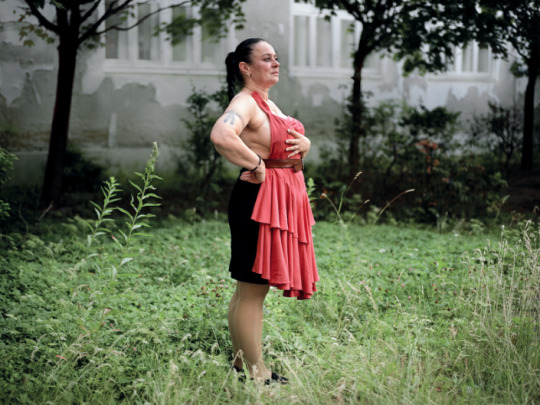
Kathrin Tschirner #14-09-03 Frau VII
Kathrin Tschirner, Germany
Before coming to Kuala Lumpur, German photographer Kathrin Tschirner, the winner of KLPA 2016 in the category “Stillness and Distance”, thought of Rinko Kawauchi from Japan as the best example of modern Asian photography. “I love her photographic images and their clear yet amazing and poetic language. I could look at them for hours and always find new angles. Perhaps this is because several cultural codes in these photographs are not self-evident for me, but this makes the images even stronger, more mystical and attractive. I experienced that feeling again at the Japanese photo exhibition (Focus Japan) of KLPA 2016. It seems that the photography in Asia operates by using symbols galore. Artists dare to work on alienation and find multiple layers between art and reportage,” she explains.
Here, Kathrin refers to a book by Mayumi Suzuki, in which the artist speaks of losing her parents in the tsunami in Japan. “It is executed beautifully: the photographer works with several narrative elements, plays with text and images, paying attention to different texture, material, colours and visual language. It seems to me that Europe lacks such detailed and experimental courage in the use and execution of photos. The West is more likely characterised by the fear of losing enshrined principles.”
As one of the winners of KLPA 2016, Tschirner does not refer to herself as a portrait photographer, although she often uses the concept of that particular genre in her work, expanding the definition of portrait photography as she sees fit. She needs human perception in order to delineate something very personal, and she moves in areas that she finds intriguing. Thus, the winning photo belongs to the series on a region in Berlin that has been an active centre of prostitution for the last 130 years. Working as a volunteer in the counselling centre for sex workers enabled the photographer to have a deeper insight in the life of these women. “Walking with them opened new perspectives of this area and my photos revealed new layers. My motifs softened and I removed needlessly loud photographs from the series. I wanted the viewer to feel the message without being too detailed and straightforward. These photos are like puzzle pieces, fragments of the concept of reality.”
Mayumi Suzuki, Japan
Above-mentioned Japanese photo artist Mayumi Suzuki remains modest when describing her photography in the context of her experience of KLPA 2016. “I think that the difference between Asian and Western photography comes from different approaches to photographic education. In Japan, there is not much discussion regarding conceptuality and context, resulting in insincerity of the majority of works. Winning European artists have powerful works built on stories with social, historical, cultural or artistic backgrounds. They have excellent story-telling skills.”

Mayumi Suzuki. The Restoration Will. In progress (2016).
Mayumi points out a new trend in Japan – compilation of photographic biographies (cf. the works of Estonian art publisher Lugemik (“Textbook”)) that act as a general portrait of the artist. Such books are compiled as an installation of experienced perceptions, and this is truly powerful. When looking at the works created by Mayumi, the viewer sees the light from stars that no longer exist ‒ beautiful, warm, and painfully tender. “Engagement in the process of creating that book was the key to my inner healing,” resumes the Japanese photographer.
Alia Ali, Yemen-Bosnia-North America
One of the most cosmopolitan photo artists I met in Kuala Lumpur was Alia Ali. She does not easily compare different photography practices from geographic aspects. “For someone, who is simultaneously Asian, European and North-American, and lives in Africa (Alia has roots in Yemen, Bosnia and America), it is annoyingly complicated to answer the question about geographical distribution of ideas. In fact, my entire collection of works contests the existence of borders. Many artists of Asian origin have lived in Europe and North America, and then returned to their homeland. Why should we categorise the origin of ideas of these people in any way. They are just their ideas, their eyes, and their vision. I would rather focus that question on the individuality of every photographer.”
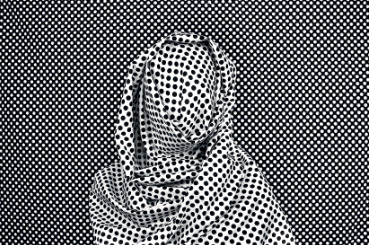
Alia Ali. Dots II. Cast No Evil. New Orleans, USA. 2016
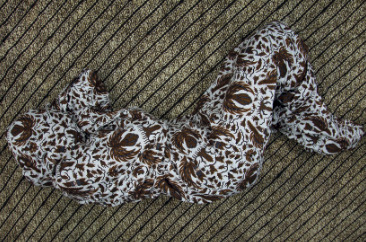
Alia Ali. Semen I.People of Pattern. Yogyakarta, Java, Indonesia. 2016
In Alia’s interpretation, the division of global photography trends is based more on style and theme. At the same time, she frequently points out the dangers in following visual trends in photography. Photographers should find their own “eye”. However, themes are still crucial. “I think that photographers should bring their creation to public discussions, and also communicate with each other. Discussion of topical issues often remains too verbal. Inaccurate use of words and resulting ambiguity may instead cause misunderstandings in various communities. Acute topics that the photography should address include migration, Islam, identity, disappearing gender concept, climate change and its impact, etc.”
When analysing the works by Alia Ali, her heritage seems to play an important role: both Yugoslavia and South-Yemen no longer exist. After struggling with that on various levels, she decided to exit the polarity and define herself through her photos. Marcel Duchamp has introduced a French term inframince, which suits well to describe Alia’s identity. This term signifies concepts that are impossible to define, but can be illustrated by descriptive examples – “I know it, because I see it”. Thus, Alia’s identity is that of a photo artist and her projects stem from inframince.
Her ongoing photo projects (e.g. Cast No Evil) often focus on the sincerity of the motives behind our daily activities. At the exhibition, the viewers feel forced to confront themselves and ask inconvenient questions. Fabrics are something that we all know and use on a daily basis, but in Alia’s works, they represent a more far-reaching symbol, denoting “fabricated” borders we built to isolate ourselves either on individual or social level. The ambiguity of the project manifests already in the title of the series “People of Patterns”, fragments of which were also included among the awarded photos of KLPA 2016. As her work covers seven different countries, she concludes that although we are all similar in terms of needs and self-realisation at birth, we still remain different in terms of reaching satisfaction. Without giving any answers, Alia rather helps the individuals to relate to themselves.
Heiko Tiemann, Germany
One of the most striking exhibitions by European artists participating in KLPA 2016 was that of German photographer Heiko Tiemann. Exhibition contained photos from series Infliction, portraying boys and girls at a school for children with special needs, suffering from traumatic disorders, complicated social background, or raised in an orphanage.
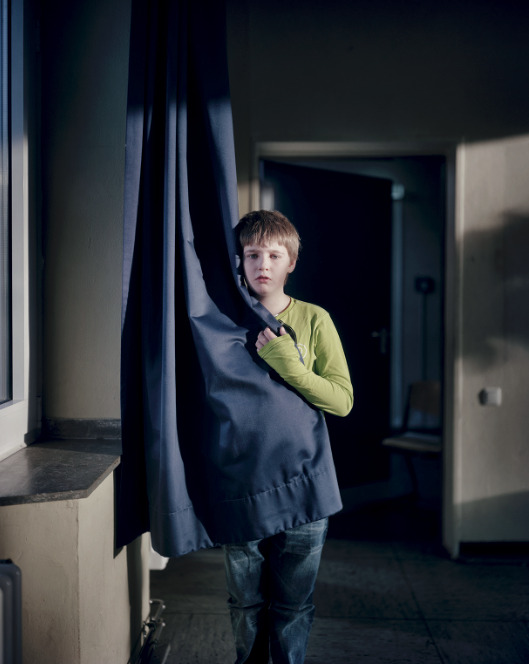
Heiko Tiemann. Infliction
In Malaysia, Heiko was fascinated by photography focussing on the aspects of people’s internal life, and these aspects clearly feature in his own work. He is a sensitive photographer, whose photos do not seem to be taken by a man (yes – stereotypes may occasionally mislead the author as well).
“I believe that the Asian photographers’ skill to probe the depths of human nature originates from the photos by Eikoh Hosoe and films by Akira Kurosawa,” says Tiemann. “The works of these authors feature a fragile connection between internal processes and external epiphanies. European photography is sometimes limited to visible aspect without perception. I think that this stems from the Europeans’ overall scepticism towards emotions and representation in art. Many photographers tend to have detached, at times even ironic approach. It may work, but in photography it represents the easy way out.”
Heiko considers himself more of a chronicler, observer of daily life, constantly taking mental photos without camera. His long-term projects are not products of rational process; they grow together into a whole over time.
Eiffel Chong and Nadirah Zakariya, Malaysia
Malaysian photo artists Eiffel Chong and Nadirah Zakariya have also participated in previous KLPA competitions. They have said that in their homeland, photography as an autonomous art discipline is still a very young area of self-expression. Thus, it is not surprising that they both obtained education in photography outside Malaysia and refer to that experience as an important aspect in their development. Eiffel Chong studied in London (London College of Printing) and Nadirah Zakariya in New York (Fashion Institute of Technology). Eiffel even mentioned that in his homeland, photographers had to look up to the western photographers for a long time, because European photography has had the greatest impact on the developing Malaysian photo community.
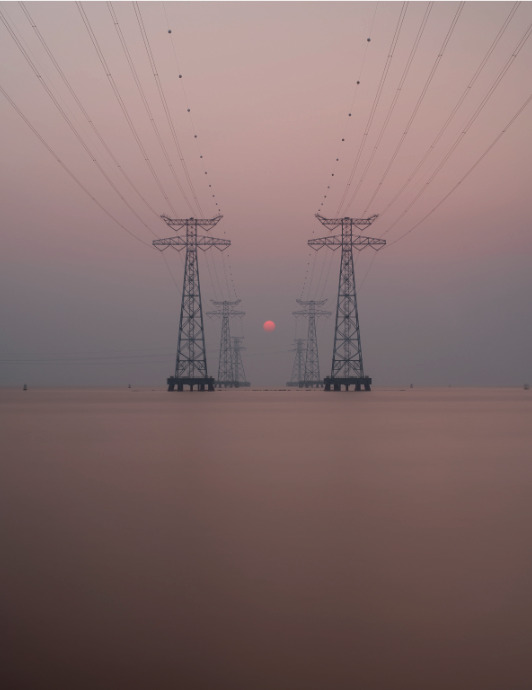
Eiffel Chong Pearl River Estuary. Seascape. 2016
“For me, taking pictures serves as a means of communication, an opportunity to visualise my thoughts. the things I choose to express through photos are very personal.” Chong has primarily studied the subjects of identity and existentialism. For example, he staged an entire series of works based on the idea how people create customary masks and how allegedly protective mask actually exposes their vulnerability and weakness instead of hiding it.
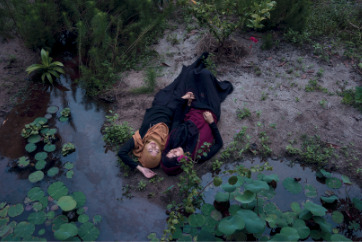
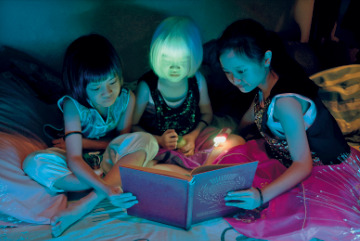
Nadirah Zakariya. Girlhood. 2016
Nadirah Zakariya is a good example of a modern, multicultural creative spirit. She provided a laconic description of her photographic style: raw or unprocessed, emotional and personal. In her most recent art project, she uses photography to disclose the secrets of sisterhood (Girlhood), studies tight connection between sisters and the spirit they share. A seemingly simple topic has been visualised to shape dreams, hope, fear, layers of various feelings, elevating the magic between women. Nadirah boldly crosses standards and often embeds contradicting content and form elements in her photos. The artist’s inner freedom to experiment has paid of.
In an attempt to sum up my meetings and experiences during the events of KLPA 2016, I can say that all the abovementioned artists have peaked in their strength, visibility and unique approaches to photography thanks to their companions and openness towards the world. I call it ‘indivisual’ – individual visual – because such pun seems rather appropriate and accurate in this case.
The world has become more open for Estonian photographers, too. For years, many of my colleagues have cooperated with foreign photo agencies, shown their exhibitions abroad and introduced local photo art in recognised international galleries. They have reached their current positions not just because of their high-quality and original creative baggage, they are also open and receptive, ready to make contact and communicate with other artists around the world, and they have learned to see other things besides their own work.
I truly wish that our fragmented photo communities would become more open to communicate with each other and curious to see beyond their own noses. There are no limits if we do not limit ourselves. ~ Annika Haas, POSITIIV 27, 2016.
Alia Ali, Yemen-Bosnia-North America, www.alia-ali.com
Eiffel Chong, Malaysia, www.eiffelchong.com
Heiko Tiemann, Germany, www.heikotiemann.de
Kathrin Tschirner, Germany, www.kathrin-tschirner.com
Mayumi Suzuki, Japan, www.mayumi-suzuki.com
Nadirah Zakariya, Malaysia, www.nadirahzakariya.com
Steven Lee, Malaysia, www.stevenleephotography.com
POSITIIV is a photography magazine published in Estonia
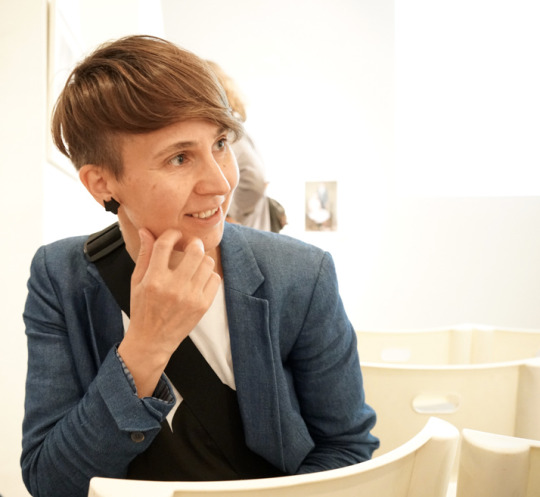
Annika Haas, writer for Documentary & Portrait Photography
www.positiiv.ee
#POSITIIV#klpa2016#annika haas#eiffel chong#nadirahzakariya#Mayumi Suzuki#alia ali#heiko tiemann#kathrin tschirner#Steven VL Lee
2 notes
·
View notes
Text
Mother’s Day - it’s complicated
Today is Mother’s Day. I’m trying not to be sad.
I have been very open about discussing my mother’s fight with cancer and her death. I write about it a lot. I find catharsis in it so I continue. By writing about it and examining the feelings I have, I keep her alive with me a little bit longer. I keep up the exploration because I continue to learn so much from it. To counter the sense of loss I feel around the Hallmark holiday of Mother’s Day, I have sought to focus on all the other women in my life who have been like mothers to me. My mother loved me to an infinite degree but she also was acutely aware of her own limitations. I think she overestimated them but they were very real to her. My mother pushed me toward others that she felt would “improve” me. During my early life my mother sought out other women who could teach me the things she felt she could not. She was always striving on my behalf. In this pursuit my mother found or encouraged me to seek out surrogate mothers to learn from. She actively encouraged my friendships with these other women.
Let me tell you about some of these women and what lessons I learned from each.
When I was in early elementary school, Bonnie lived down the street from us in our townhouse complex. I’m guessing she was early 30s then. She had no children of her own, though I believed she wanted very much to be a mother. It wasn’t in the cards for her. Bonnie’s husband was a career Army officer and Bonnie was, at that time, a stay at home wife. My brother and I got to know her because we loved playing with her black lab, Machen, German for “girl.” Just as kids would go knock on a friend’s door and ask, “Wanna ride bikes?” I would knock on Bonnie’s door and ask, “Can Machen come out and play?”.
Bonnie had a challenging relationship with her own mother and father. Her mother favored her older brothers. Her father was remote and often cold. My mother, facing disappointment and problems in her marriage, confided in Bonnie and the two became close. Hours in Bonnie’s kitchen would reveal stories of her youth that stay with me today.
Bonnie had studied home economics in college. I’m sure this would be a questionable choice at best today, if such a choice were even an option. People often ask me about my love of food. I got it from Bonnie. My mom was not a very good cook. She never learned to cook in Korea. She improvised once she got to America but her repertoire was largely traditional American fare she learned from my great-aunts. Meatloaf. “Broiled” steak (more like boiled steak). Stew. Mashed potatoes. Frozen green beans and succotash. Because my mother worked, she stocked the house with Hostess cupcakes and Hungryman frozen dinners.
Bonnie was not a gourmet by today’s Food Network standards but she could work a cookbook. What I loved more than anything was watching Bonnie make and decorate cakes. She would make buttercream frosting and turn it into roses and flowers and leaves and grass and basketweave along the edges of a sheet cake. It was like watching something come to life out of a Wilton how-to pamphlet. Every cup of flour was carefully leveled. Every bowl of powdered sugar was meticulously sifted for lumps. Bonnie could also sew and crochet. At her side, I hooked endless potholders. One Halloween I recall we made sugar molds of black cats to put alongside a cake she baked for a friend. We tried over and over to get the sugar to turn pitch black (no gel food coloring back then). When I got the mix just right, we pressed the sugar into the molds and voila! Angry black sugar cats emerged, ready to stand along the orange frosted cake.
Bonnie was my main adult supervision and spirit guide for all my Girl Scout badges. We would pour over the Girl Scout Handbook and dog ear the pages with the badge requirements for the ones I hoped to earn that year. I hosted my first complete dinner party at her house (of course I got a badge for that one). I made whipped sweet potatoes with marshmallows and Swedish meatballs. I invited my parents over and served the whole thing. Bonnie gifted me cookbooks and let me watch her make sewing patterns and sew baby dresses for her nieces. She had a silver collection and a closet full of Kewpie dolls that she collected from childhood. Bonnie also had a weight problem and as a fat kid myself, we bonded over it.
Bonnie had lost 30 pounds at Weight Watchers but she had gained a good portion of it back when I met her. I was just a chubby kid. My mother fed me and fed me and then complained about how fat I got. I remember going to my first Weight Watchers meeting with Bonnie at the age of 12 at my mother’s urging. Having Bonnie to talk to about this was such a help. My mother had been too thin growing up and had never been fat. Her push-pull with me about food gave me whiplash. Bonnie could understand the torment I felt of loving food but hating it at the same time. It was good to have someone to confide in who got it.
Bonnie also had some coping mechanisms that were unusual. When in pain, Bonnie would laugh hysterically. One day she burned her hand in the kitchen. Rather than yelp or cry out, she began to... laugh. I looked at her like she was deranged. Once we wrapped her hand, she confided that her older brothers had often picked fights with her when they were children. When they would hit her, she learned to hide her tears so as not to give them the satisfaction of seeing her hurt. Instead, she began to laugh. Her reflexive pain reaction was laughter. Never let them know you are hurt is something animals know as a survival skill. I had never met a person who had adopted this strategy in such a way. It made an deep impression on me.
Then Bonnie moved away.
Pat was our immediate next-door neighbor. She moved in when I was in 4th grade. She seemed to me to be a successful career woman. She was recently divorced with custody of her 3 kids who were all around my age. Pat subscribed to Cosmopolitan magazine and drank White Russians and pink wine. She was a potty mouth but very pretty. You could tell that she had been sought after in her younger years. Even in her mid-30s, life had not yet worn her down. In my 11 year old brain, Pat was very sophisticated. It was obvious she had had many boyfriends after her divorce. I had never met anyone like her before.
In our neighborhood everyone’s door was always unlocked. We all came and went without knocking, especially in the summer when everyone was home from school. No one went to summer camps back then. Some kids visited their grandparents. Most of our neighbors had family in Tennessee and when summer came, off they went to the Smoky Mountains. My best friend’s family was Cuban so her summers were spent in Miami with her abuelo and abuela. I was bereft without her company. The summers were long. One year Pat’s kids went to spend the summer with their father. I spent almost all summer at Pat’s house while they were gone.
Pat had a stash of Cosmo magazines from the late ‘70s. Every issue was about sex, make-up, and dieting. It was the summer between 5th and 6th grade and I would go over to Pat’s house and spend hours going through issue after issue. I learned about the Grapefruit diet. I read articles about the mythical G-spot. Does it exist? Is it real? How would you know? The Atkins Diet was a thing. Lose 10 pounds in 2 weeks! Then the Beverly Hills Diet was a thing. Eat this, don’t eat that. Eat ONLY this. For 2 weeks. Then eat that. How much should you tweeze your eyebrows? Here is how to get the ultimate St. Tropez tan. I read every word and memorized every image. This was what being a liberated woman was all about. Right there in those pages.
Pat had, in a prior life, gotten her cosmetology degree and license. I would sit in her kitchen and she would cut my hair and put it on rollers. She also sold Mary Kay Cosmetics and had drawers and drawers of samples. Make up nirvana! All in pretty pink bottles. I would try on the different colors but because we had read Color Me Beautiful together, I knew that I was an “autumn” and should stick to the warmer shades. Pat also always had perfectly done nails. Long, polished talons, she would rap them on the counters and on the dashboard while she was driving. Click, click, click, click. When one broke, she would slap on an acrylic tip and lickety-split, they would be perfect again. Perfect looking but not real.
For all that she was worldly and intriguing to my 11 year old mind, she was also clearly struggling to stay afloat. Her job situation was often erratic. She moved from one thing to the next, finally falling back on her cosmetology degree and working in a beauty salon. Her kids seemed to be in perpetual trouble and were not doing so well in school. Her oldest son went to go live with his father. She found herself pregnant by her married boyfriend, had the baby and then found herself pregnant again. Her liberated woman veneer didn’t hold up so well once you scratched the surface. Sometimes the most important lesson you learn is what not to do. Pat was like that older sister you are intrigued by but who winds up being a cautionary tale. I caught onto that pretty quick.
Then my family moved to a new neighborhood.
I met Jenna in high school. She was my boyfriend Garrick’s mom. I think I was probably a sophomore when we first met. In senior year, Garrick and I dated. He was my prom date and we were together until the end of our first semester of college. While in high school, and even after we started college, all of our friends hung out together and we often landed at one house or another near our high school campus. Garrick’s house was one of those houses where we often found ourselves. We were a small posse of nerdy kids who got together on Saturday night to play charades and board games and did student government and band in school. (I was not in band, for the record but I was a big into Model UN and student government.) If we weren’t at Garrick’s house we were at Torunn’s house. Torunn remains to this day, the only truly natural blonde I’ve ever known. Garrick and Torunn lived in the same neighborhood and both had split level houses. The lower level of each home became our regular gaming and movie haunts.
Jenna and her husband were from Oklahoma. They were 25 years out of the University of Oklahoma but she still had a clearly distinct southern twang. Her husband Jim had a deep voice with no discernible trace of southern inflection to my ear. He was a perpetually calm presence. As even-keel and reserved as Jim was, Jenna was vivacious, warm, and very, very chatty. You can pluck a girl out of the south but you can’t pluck the southern out of the girl. I immediately took to her. We were fast friends, me at 17 and her at 46. Which is, funny enough, how old I find myself as I write this.
Garrick had an older brother so Jenna was mom of 2 sons and no daughters. I have even more in common with Jenna now than I did then. As the mom of 3 boys, I understand how impenetrable their lives can seem. More than just a friend to her, looking back, I’m convinced I was her conduit to her younger son and his social circle. Like Jenna, I live for conversation. Through our long talks I think she got to know her son just a bit better. Because I was a girl and I would spill. Boys share so little. I got to be a surrogate daughter and in exchange, I got another surrogate mother out of the deal.
Jenna would invite me to join their family dinners often. She had little choice. I would overstay my welcome at every chance because I so enjoyed the company of this family. At their dinner table I found a more adventurous menu than I had ever seen in my own home. Jenna made an arugula salad with strawberries. What is this insanity? Arugula? What is that? Fruit? In a regular salad? Salad in my house was iceberg lettuce and Wishbone Italian dressing. Jenna was a meticulous chef. Also a Weight Watchers veteran, she weighed and measured every meal like it was a science experiment. Everything was portioned and plated meticulously. It seemed so… fancy. I learned a lot from watching her prepare each meal. Salad, entree, dessert. Each carefully and lovingly prepared with more thought than any meal I’d ever seen in any person’s home. More than the food, there was the spirited verbal sparring that took place like nothing I’d ever seen. Words were not blunt force instruments lobbed across the table intended to inflict fatal injury like they were at my house. Here they were carefully sharpened little barbs meant only to agitate the opposing party enough to up the state of verbal play.
Garrick’s dad was an economist for the International Monetary Fund. Their dinner conversation covered world affairs and national politics. I soaked it up and tried my best to keep up with the conversation. Once in awhile, I managed to hold my ground and even best my companions. I recall one dinner where Garrick, in an effort to show his clear superiority in all things world affairs, threw down and challenged me to identify what the acronym SWAPO stood for. Having just dealt with a Model UN resolution regarding recognition of the South West African People’s Organization as the official government in exile of Namibia, I felt pretty confident on that one. I did not, however, correctly identify the role of the Shining Path in Peru in the follow-on questioning. This was the kind of thing we talked about. It wasn’t the kind of thing we did in my home. I didn’t go back to dinner there without reading the day’s Washington Post headlines.
This was also a family that had lived abroad and had traveled extensively. I was perhaps the only 17 year old girl in all of Northern Virginia, perhaps the entire eastern United States, who enjoyed watching multi hours-long travelogue slideshows with live commentary. But I *really* did. Garrick’s family had trekked all over the world, whereas I had never left the DC metro region. Sitting in his basement, I traveled the world with this family through their carefully curated slideshows. It made me curious. I loved their stories and I loved being part of their family rituals. I felt included and I felt like I became a little bit smarter just by being around them all.
There was an episode of Sex and the City where Carrie reluctantly breaks up with her boyfriend. Reluctant only because she really, really liked his mom. I can relate. I think I spent almost as much time on the phone with Jenna as I did with Garrick. When Garrick and I finally broke up, I might have been sadder to lose my girlfriend than to lose my boyfriend.
Of course we kept in touch but over the years that too, has waned. I hope that I can be a friend to my sons’ girlfriends and, someday, wives in the way that Jenna was to me. I recall that she was the first person who ever told me that I was a good writer and who encouraged me.
No one is shaped by only one person. These women I write about were not the only ones who influenced me or taught me things. It’s a complex calculus, making a whole person. I think my mom understood this. Only much later in my life did I come to realize how difficult it was for my mother to see me connect with these other women. How much it made her feel inadequate and how jealous she was of the time I spent with them. She never said this to me. One day I just understood it to be true. In knowing this and upon looking back, I value her and those relationships even more.
Happy Mother’s Day to all the women who shape our lives.
0 notes